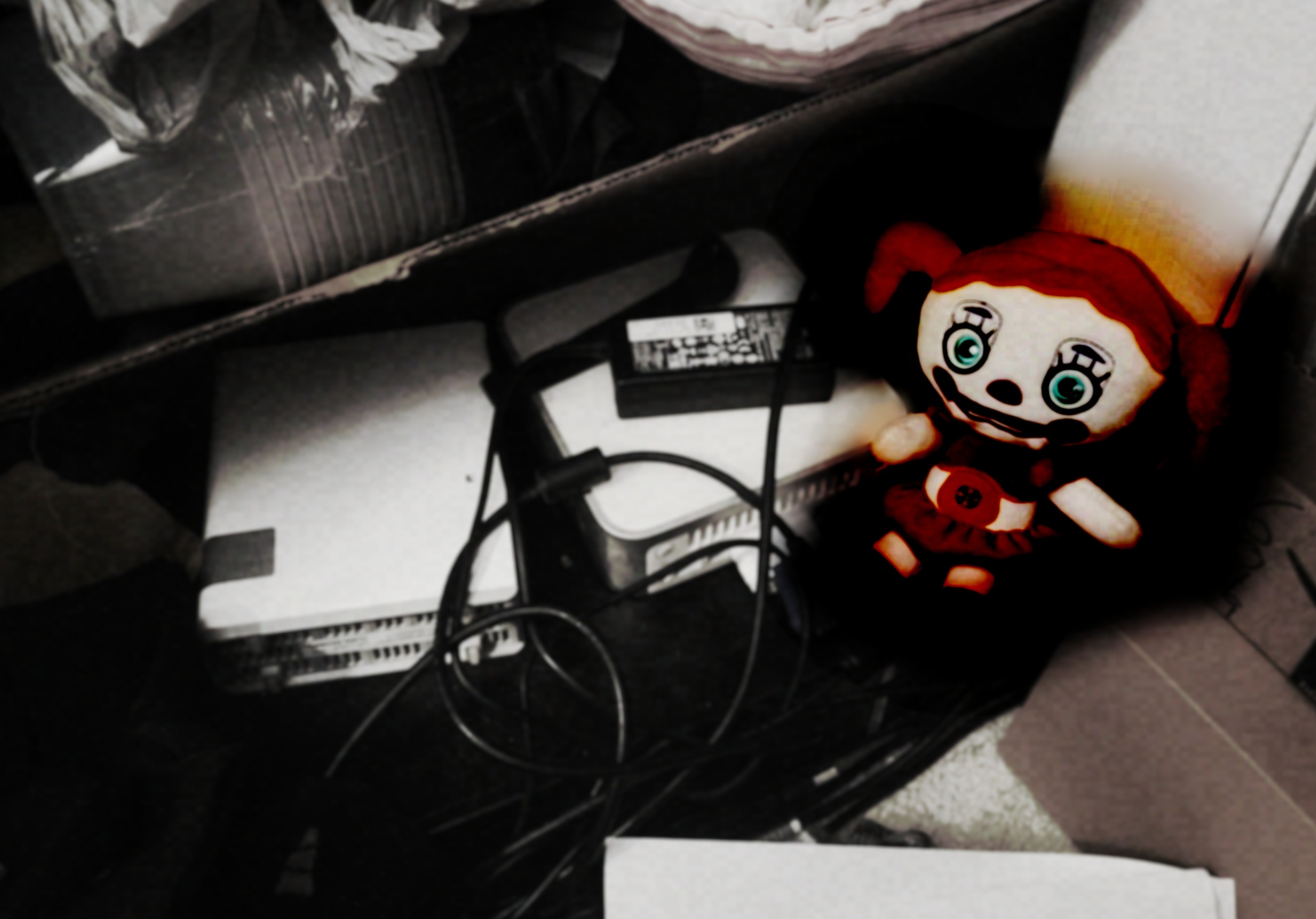
Pictured: A plush of the "Circus Baby" character, who appeared in the Freddy & Friends animated series. This plush was a subject of study by Joshua Currows.
Demoneurology

Overview
Demoneurology (a portmanteau of demon and neurology, and a pun on demonology) is a set of ideas studied by Joshua Currows during his time with the Xeno-Organism Research Group. It focuses Emma Thorsby's manifestation theory toward the realm of negative emotions, speculating a process by which mental constructs may enter a state of autocatalytic evolution, extending themselves outside the bounds of their original host psyche. Currows dubbed these entities demons, and went on to develop a theory regarding their creation and perpetuation.
Basic Theoretical Concepts
Emma Thorsby's theory of manifestation, as well as Margaret Macari's contentious speculations regarding the zero-point field are taken as postulate. These concepts are then used to study the contents of memories tied to strong negative emotions. It is common for the behavior of objects or characters within these memories to be emotionally influenced, usually simply through exaggerated physical features or enhanced aggression. Currows notices that these characters, when projected onto others' perception, will tend to reenforce the emotion that spawned them. This results in a feedback mechanism of emotions reproducing themselves through their influence on minds.
It is nontrivial, but commonly speculated, that this process is subject to darwinian selection on an accelerated timescale. It is thought by Currows to be capable, under special circumstances, of generating intelligent agents.
Taxonomy
The behaviors of these entities have been classified into four (mutually inclusive) categories. Note that a single demon may modify itself over time, taking on different behaviors in different contexts.
Echoes are simple reflections of past events, direct recreations of memory. Their status as "demons" may be dubious, as they do not necessarily show any particular intelligence or intentionality. This behavior is particularly associated with emotions like grief, regret, melancholy, or other feelings which are focused on the past.
Parasites attach themselves to sources of strong emotion, usually the mind of their original host. They may manipulate the psyche in a way which reflects this emotion, in turn reenforcing it, usually via the induction of hallucinations or nightmares. If the host is no longer producing the relevant emotion sufficiently, the demon may either be driven away or simply dissolve. This behavior is particularly associated with emotions like anger, hatred (especially self-hatred), or other feelings related to aggression or victimhood.
Demons may sometimes take spiritual possession of tangible objects, particularly (though not exclusively) objects of relevance to their memory of origin.
A fourth category has been considered for unexpected behavior which does not conform to the existing taxonomy. Wanderers may act in odd ways which do not seem to directly reflect or reproduce memory. It is thought that this state can be produced as a result of a conflict of emotion- for example, a demon formed by anger being forcibly confronted with feelings of love or joy. The interplay of conflicting emotion may generate greater behavioral complexity than what is observed in simpler demons.